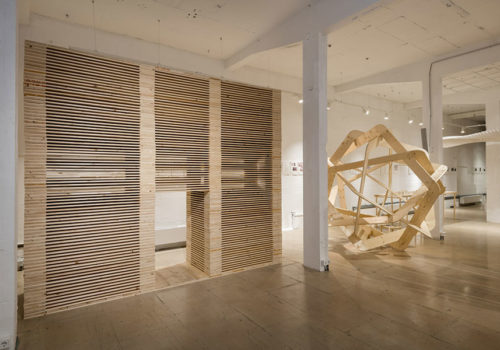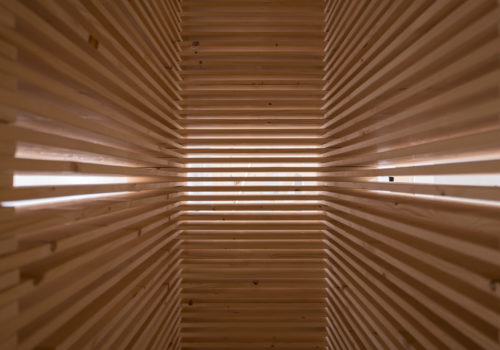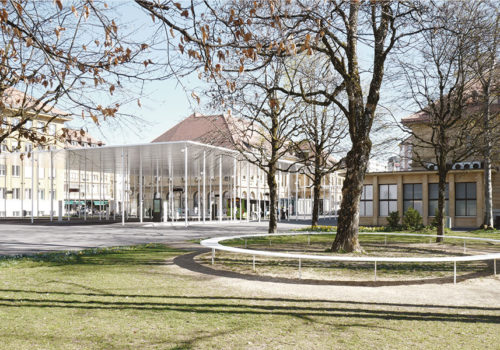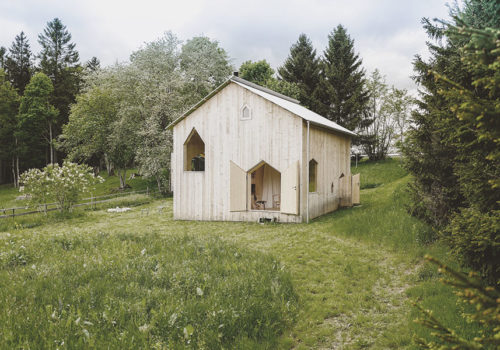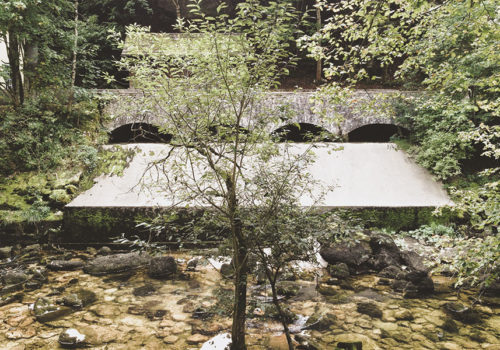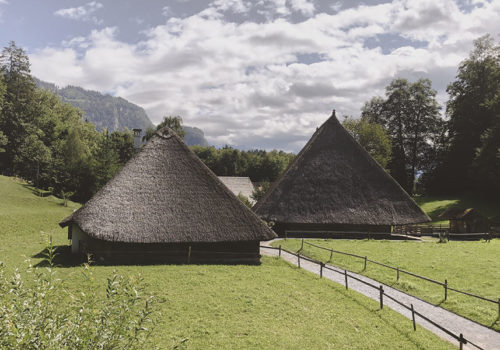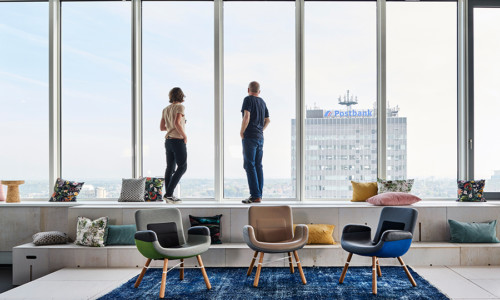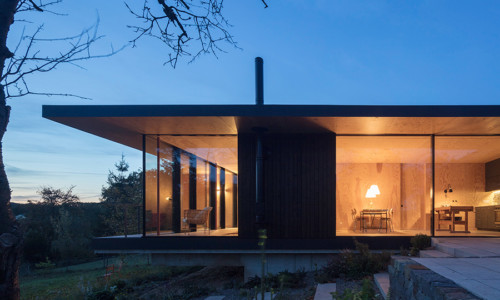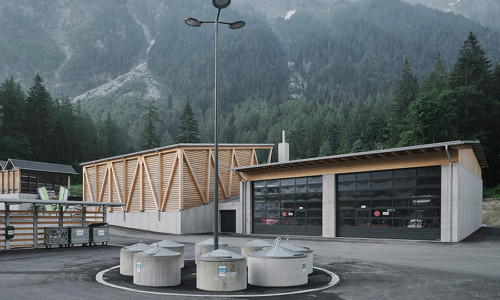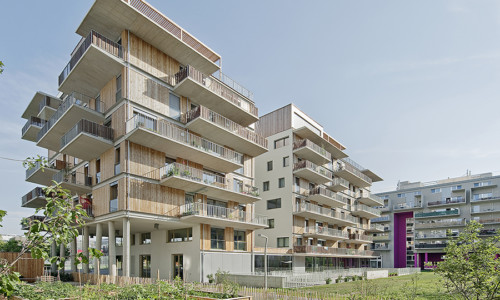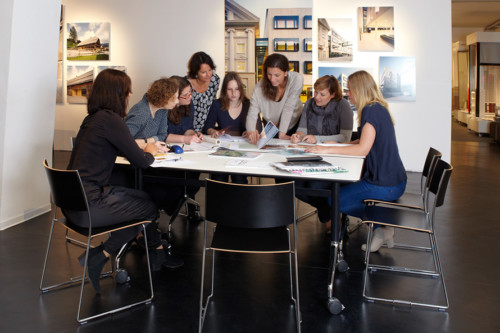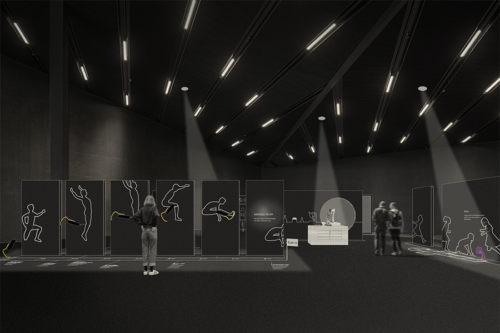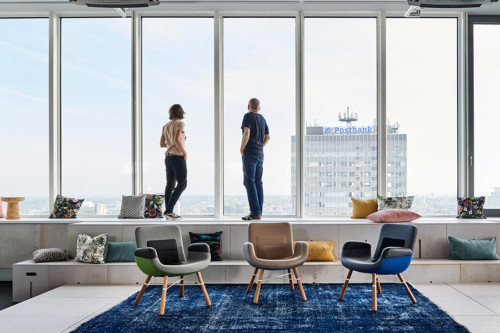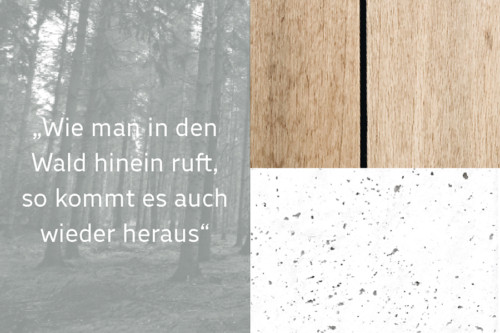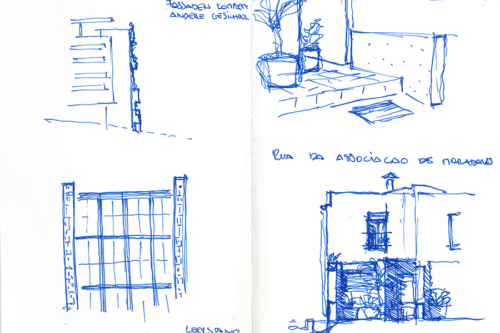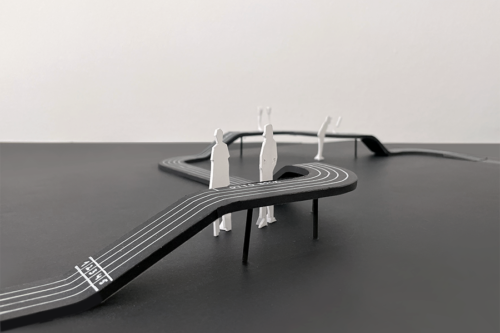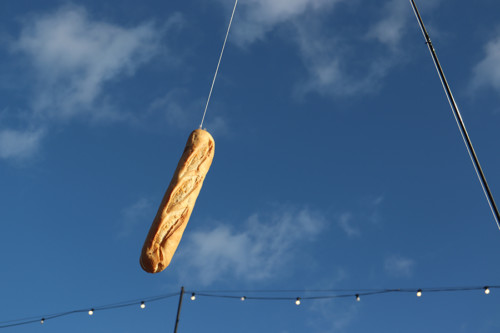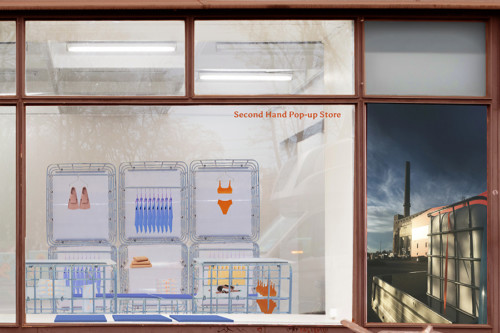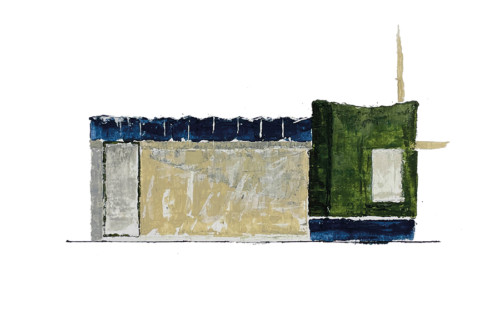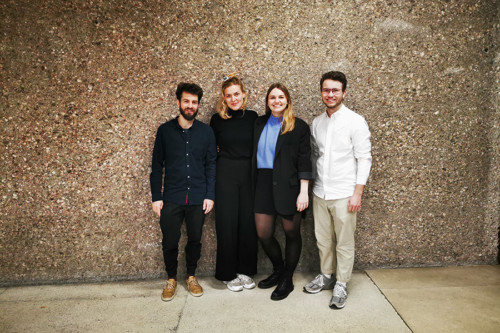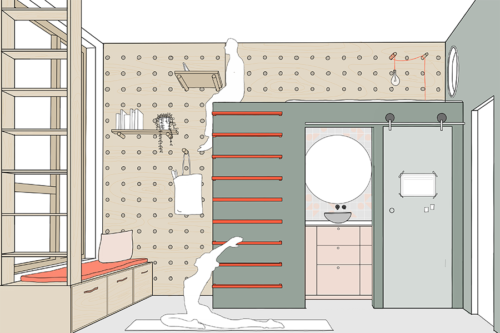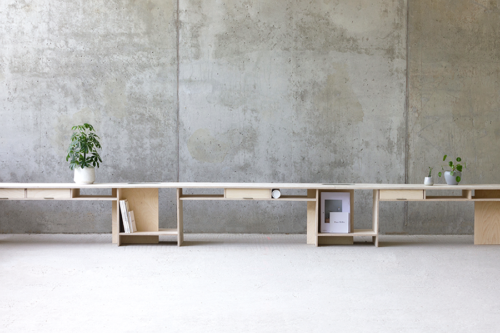Installation von frundgallina
- Installation von frundgallina, AIT-ArchitekturSalon München, 2020 ©Schelke Fotografie
- Installation von frundgallina, AIT-ArchitekturSalon München, 2020 ©Schelke Fotografie
- 1. What is the idea underlying the design and how does it articulate itself in the design? ©frundgallina
- 2. Is there a special experience that marks a key moment in your involvement with Japanese building culture? ©frundgallina
- 4. Is there a vernacular architecture of this culture (contemporary and historical) that inspires you? ©frundgallina
- 5. Are there essential differences and commonalities between the two building cultures? ©frundgallina
Das Schweizer Architekturbüro frundgallina stellt in ihrem Entwurf für die Ausstellung “Dialoge Japan : Europa” die Reflexion ihres eigenen Arbeitsprozess in den Fokus, der geprägt ist von zahlreichen Themen und Ideen aus der japanischen Baukultur. Hier spielt Atmosphäre, die durch den gezielten Einsatz von Licht, Stimmung, Materialität und Raum erzeugt wird, eine übergeordnete Rolle.
Die Büropartner Jean-Claude Frund und Antonio Gallina haben uns zu ihrer Installation, ihrem Schaffen und den Einfluss der japanischen Architektur auf ihr eigenes Oeuvre fünf Fragen beantwortet:
1. What is the idea underlying the design and how does it articulate itself in the design?
In our architectural approach, we think of how to design atmosphere and consequentially to the emotions that the project will animate. In substance, we use physical models as a tool for constant research and design, allowing us to visualise these ambiences and to communicate them.
2. Is there a special experience that marks a key moment in your involvement with Japanese building culture?
From the early years of our practice we have been intrigued by japanese architecture, there is not a special moment or specific experience that links our design with its building culture. Regrettably, we have not yet traveled to Japan. We discovered, through numerous publications, this architectural culture that is sensitive to spaces, volumes, the composition and articulation, the relation between the interior and the exterior, the importance of the threshold, the integration of the landscape and the nature into the design. These aforementioned motifs speak to us profoundly.
3. Which architect and building of Japanese culture (contemporary and historical) is most influential for you?
It is difficult to choose just one; the work of Terunobu Fujimori, Kazuo Shinohara, Ryue Nishizawa, Kazuyo Sejima and Sou Fujimoto are particularly influential to us. We also admire the work of Junya Ishigami, Go Hasegana and Studio Velocity for their poetry.
4. Is there a vernacular architecture of this culture (contemporary and historical) that inspires you?
We refrain from citing specific examples of vernacular architecture. Our references are very diverse, often abstract and we take the liberty to interpret them is a sometimes subjective way; for example the silhouette of a traditional house, its interior organization, a simple detail or its interconnection with the natural environment.
5. Are there essential differences and commonalities between the two building cultures?
We see more similarities than differences between the building culture in Switzerland and that of Japan. To illustrate these analogies, on must only think of the importance of the landscape in the collective memories of both of these cultures, to the us of timber in the art of construction in be it traditional japanese houses or swiss. The differences are in more of a societal and cultural entity, in the way of inhabiting for example.
frundgallina, CH- Neuchâtel
Das Architekturbüro frundgallina wurde 2005 von Jean-Claude Frund und Antonio Gallina gegründet. Es ging aus dem gemeinsamen Büro Frund Gallina Rey Architekten (1998-2005) gemeinsam mit Alexandre Rey hervor. Bereits vor der Gründung des eigenen Büros gewannen Frund und Gallina zusammen zahlreiche Architekturwettbewerbe, die zu gemeinsamen Projekten führten. Das Büro frundgallina will weniger spektakuläre Architektur entwerfen, als vielmehr durch eine kreative und sensible Herangehensweise eine intuitive und besondere Architektur schaffen.
The frundgallina architects office was founded in 2005 by Jean-Claude Frund and Antonio Gallina. It emerged from the joint office Frund Gallina Rey Architects (1998-2005) with Alexandre Rey. The founders have had a linked path since youth. After their studies in Fribourg and a few years of professional practice and travel, they created their office. During this time, they participated in many architectural competitions, winning numerous ones that resulted in realized projects. Frundgallina office does not seek to produce spectacular architecture, but through a creative and sensitive work process, it favors work that responds intuitively and ingeniously to the site.
Weitere Informationen zur Gruppenschau sowie eine virtuelle Führung durch die Ausstellung finden Sie hier.
Kuratiert wurde die Ausstellung “Dialoge Japan : Europa” von Kristina Bacht und Çi?dem Arsu-Minuth (AIT-ArchitekturSalon) in Zusammenarbeit mit Nils Rostek (Kollektiv A).






